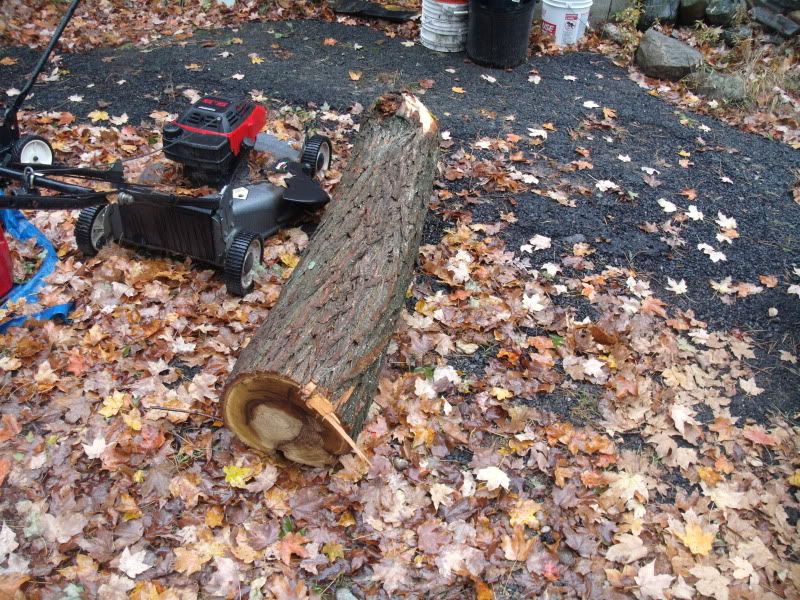Today I didn't have any work, which is a good thing because I've been feeling terrible and running a low grade fever most of the day, on top of getting very little useful sleep because I was focusing on avoiding throwing up.
So I started collecting parts for a bike trailer I'm going to build, based on the plans here:
http://www.carryfreedom.com/bamboo.html
So far I have the metal sheet for the brackets mostly cut, still need to drill holes, make a couple more cuts, and bend them to shape.
Two cracked bicycle wheels that I got for free at the bike shop.
I'm not decided yet on what I'm going to use for the frame, but probably maple sticks from the yard.
I also pulled myself together today and carved some spoons. I started out with the small Maple log you see here:

I split it out into four useful blanks, then cut two of them in half for eating spoons. The other two were meant for serving spoons. One of the blanks had a catastrophic crack in it that I didn't see until I was mostly done rough shaping it with the axe, so that went into the fire pile. The first step in shaping is done with the axe, and a saw to trim off the edges of the blank close to my pencil marks (which are drawn freehanded in whatever shape appeals to me).

After roughing with the axe, I carve out the bowls with my hook knife.

After that, I attack them with the regular knife. This is the stage in which everything is refined and the block of wood actually starts to resemble a proper utensil. I leave everything a bit thick at this point, so that once the wood dries out I can shave it down to finished dimensions.




Here are the tools I used, except the saw which was used for four cuts. Gransfors Bruks Swedish Carving Axe, Mora 510 (with a bit of a regrind to saber convex bevel), and a Mora small radius hook knife. This is about $210 worth of tools, but $180 of that is in the axe. For a much more reasonable tool kit, you can replace the axe with almost any axe. Below you can see two $15-20 axe heads rehandled with the same pattern handle as the carving axe (Cold Steel Norse Hawk, and a modern Collins hatchet). For even less, you can get great old hatchets for $5 and grind a fresh edge on them, slap a new handle on, and you are good to go. That would bring a basic spoon carving kit to about $50 or less, brand new!


The fin on the back is something new for me that I've been trying to figure out for a while (I'm embarrassed to say, now that I've figured it out). Deceptively simple to apply, and it adds quite a lot of strength to the spoon in the weakest part. You might also notice the grain of the spoons. I was careful to align the rings in the spoons so that the spoons would be strongest in the direction that force is applied, similar to aligning the grain of an axe handle.
The curve of the spoon, with the bowl canted in relation to the handle, makes the spoon tremendously easier to eat out of compared to a straight spoon.
Total time so far on these spoons is a bit under 4 hours, which includes 10-15 minutes sharpening my axe. That works out to 45-50 minutes per spoon so far. I'll probably spend another 20-60 minutes on each spoon to finish them out, so if I round up, each spoon will take about 2 hours of work by the end.



















